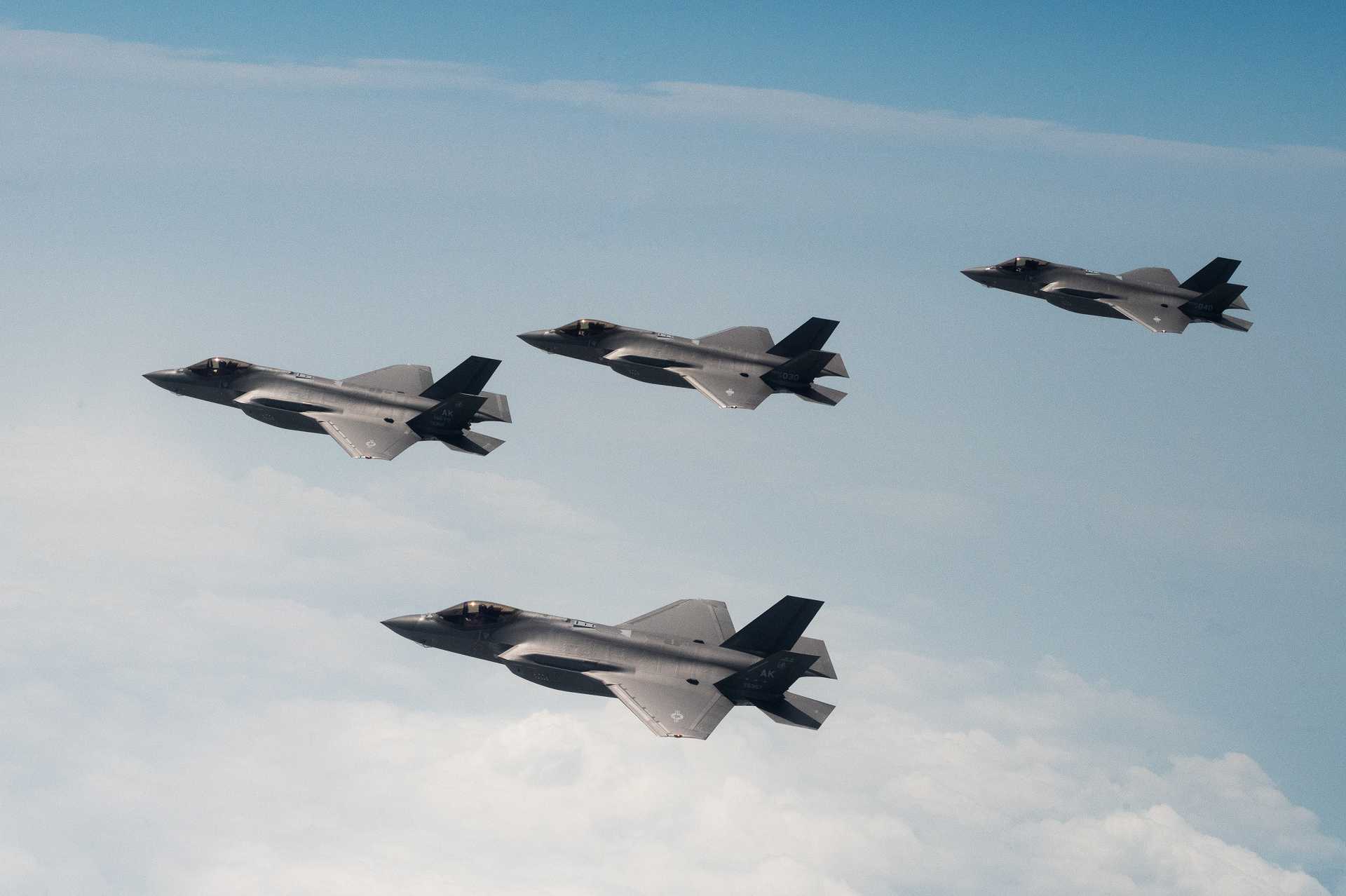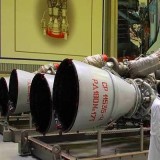Flash News: U.S. Air Force Considers Permanent Deployment of F-35A Stealth Fighter Jets to South Korea

{loadposition bannertop}
{loadposition sidebarpub}
According to information published on April 27, 2025, by the Korea JoongAng Daily, a South Korean daily newspaper, the United States is considering permanently deploying F-35A Lightning II stealth fighter jets at Kunsan Air Base in South Korea. This move would significantly reinforce U.S. air capabilities on the Korean Peninsula, which currently rely heavily on F-16 Fighting Falcons. While F-35As have been only temporarily deployed for joint exercises, a permanent presence would mark a strategic shift, delivering advanced 5th-generation airpower in one of the world’s most volatile regions.Follow Army Recognition on Google News at this link
U.S. Air Force F-35 Lightning IIs from the 356th Fighter Squadron at Eielson Air Force Base fly side by side with Republic of Korea Air Force F-35s from the 151st and 152nd Combat Flight Squadrons as part of a bilateral exercise over the Yellow Sea, Republic of Korea, July 12, 2022. (Picture source: U.S. DoD)
Discussions are currently underway to deploy up to 20 F-35A stealth fighters to Kunsan Air Base in South Korea. This deployment would complement the Republic of Korea Air Force’s existing fleet of 40 F-35As, acquired under a $6.8 billion agreement finalized in 2014, which have been fully integrated into South Korea’s air defense structure. The introduction of U.S. F-35As on a permanent basis would enhance interoperability, strengthen combined operational readiness, and provide a critical boost in air superiority capabilities. A U.S. military official from the 7th Air Force indicated that while the idea is actively being explored, no final decision has been made yet.
Currently, the U.S. military maintains a robust permanent presence in South Korea across all service branches, with approximately 28,500 American troops stationed in the country under the U.S.-ROK Mutual Defense Treaty. The U.S. Army’s Eighth Army is headquartered at Camp Humphreys, the largest overseas U.S. military installation. It includes the 2nd Infantry Division/ROK-U.S. Combined Division, which maintains frontline defenses north of Seoul and is equipped with advanced assets such as M1A2 Abrams tanks, Bradley Fighting Vehicles, Apache helicopters, HIMARS rocket artillery systems, and Patriot missile batteries.
The U.S. Air Force operates under the Seventh Air Force, headquartered at Osan Air Base. Osan hosts a Super Squadron of 31 F-16 Fighting Falcons, and according to information released on April 24, 2025, the Seventh Air Force plans to extend its Super Squadron test into a second phase by October 2025. This phase involves transferring another 31 F-16s and about 1,000 Airmen from Kunsan Air Base to Osan over the summer, effectively creating two full-strength Super Squadrons. Kunsan Air Base will continue to operate as a primary exercise and rotational hub, maintaining active flightline operations and strategic munitions storage to support the rapid deployment of rotational forces.
Beyond air assets, the U.S. Navy maintains a vital rotational presence, using Fleet Activities Chinhae as a support hub for visiting carrier strike groups, Aegis-equipped destroyers, and submarines. Nuclear-powered attack submarines are also periodically deployed to bolster undersea deterrence capabilities. The U.S. Marine Corps maintains a rotational training presence and is reinforced by the III Marine Expeditionary Force from Japan, capable of rapid deployment for amphibious and crisis response operations on the Korean Peninsula.
The permanent deployment of F-35As is seen as a necessary move to counter the growing threat from North Korea’s expanding ballistic missile arsenal, nuclear weapons programs, and modernization of conventional forces. The F-35A’s stealth design, advanced sensors, electronic warfare systems, and precision strike capabilities would allow the United States and South Korea to conduct deep strike missions against heavily defended North Korean targets with minimal warning. It would also provide superior air dominance in the early hours of any potential conflict, critical for neutralizing threats before they can escalate.
For South Korea, hosting additional U.S. F-35As would provide enhanced security guarantees and allow even tighter integration with their own F-35A fleet. Joint training, operational planning, and network-centric warfare tactics would improve dramatically, delivering a formidable allied force capable of deterring, and if necessary, rapidly defeating any North Korean aggression. The strategic message of such a deployment would also be significant, reassuring regional allies and demonstrating the unwavering commitment of the United States to defend South Korea and maintain stability in Northeast Asia.
As discussions continue, the possible stationing of U.S. F-35As reflects the broader strategy of ensuring overwhelming land, sea, and air superiority on the Korean Peninsula. It underscores the growing military integration of the U.S.-ROK alliance and the shared determination to deter threats and preserve peace through strength.

{loadposition bannertop}
{loadposition sidebarpub}
According to information published on April 27, 2025, by the Korea JoongAng Daily, a South Korean daily newspaper, the United States is considering permanently deploying F-35A Lightning II stealth fighter jets at Kunsan Air Base in South Korea. This move would significantly reinforce U.S. air capabilities on the Korean Peninsula, which currently rely heavily on F-16 Fighting Falcons. While F-35As have been only temporarily deployed for joint exercises, a permanent presence would mark a strategic shift, delivering advanced 5th-generation airpower in one of the world’s most volatile regions.
Follow Army Recognition on Google News at this link
U.S. Air Force F-35 Lightning IIs from the 356th Fighter Squadron at Eielson Air Force Base fly side by side with Republic of Korea Air Force F-35s from the 151st and 152nd Combat Flight Squadrons as part of a bilateral exercise over the Yellow Sea, Republic of Korea, July 12, 2022. (Picture source: U.S. DoD)
Discussions are currently underway to deploy up to 20 F-35A stealth fighters to Kunsan Air Base in South Korea. This deployment would complement the Republic of Korea Air Force’s existing fleet of 40 F-35As, acquired under a $6.8 billion agreement finalized in 2014, which have been fully integrated into South Korea’s air defense structure. The introduction of U.S. F-35As on a permanent basis would enhance interoperability, strengthen combined operational readiness, and provide a critical boost in air superiority capabilities. A U.S. military official from the 7th Air Force indicated that while the idea is actively being explored, no final decision has been made yet.
Currently, the U.S. military maintains a robust permanent presence in South Korea across all service branches, with approximately 28,500 American troops stationed in the country under the U.S.-ROK Mutual Defense Treaty. The U.S. Army’s Eighth Army is headquartered at Camp Humphreys, the largest overseas U.S. military installation. It includes the 2nd Infantry Division/ROK-U.S. Combined Division, which maintains frontline defenses north of Seoul and is equipped with advanced assets such as M1A2 Abrams tanks, Bradley Fighting Vehicles, Apache helicopters, HIMARS rocket artillery systems, and Patriot missile batteries.
The U.S. Air Force operates under the Seventh Air Force, headquartered at Osan Air Base. Osan hosts a Super Squadron of 31 F-16 Fighting Falcons, and according to information released on April 24, 2025, the Seventh Air Force plans to extend its Super Squadron test into a second phase by October 2025. This phase involves transferring another 31 F-16s and about 1,000 Airmen from Kunsan Air Base to Osan over the summer, effectively creating two full-strength Super Squadrons. Kunsan Air Base will continue to operate as a primary exercise and rotational hub, maintaining active flightline operations and strategic munitions storage to support the rapid deployment of rotational forces.
Beyond air assets, the U.S. Navy maintains a vital rotational presence, using Fleet Activities Chinhae as a support hub for visiting carrier strike groups, Aegis-equipped destroyers, and submarines. Nuclear-powered attack submarines are also periodically deployed to bolster undersea deterrence capabilities. The U.S. Marine Corps maintains a rotational training presence and is reinforced by the III Marine Expeditionary Force from Japan, capable of rapid deployment for amphibious and crisis response operations on the Korean Peninsula.
The permanent deployment of F-35As is seen as a necessary move to counter the growing threat from North Korea’s expanding ballistic missile arsenal, nuclear weapons programs, and modernization of conventional forces. The F-35A’s stealth design, advanced sensors, electronic warfare systems, and precision strike capabilities would allow the United States and South Korea to conduct deep strike missions against heavily defended North Korean targets with minimal warning. It would also provide superior air dominance in the early hours of any potential conflict, critical for neutralizing threats before they can escalate.
For South Korea, hosting additional U.S. F-35As would provide enhanced security guarantees and allow even tighter integration with their own F-35A fleet. Joint training, operational planning, and network-centric warfare tactics would improve dramatically, delivering a formidable allied force capable of deterring, and if necessary, rapidly defeating any North Korean aggression. The strategic message of such a deployment would also be significant, reassuring regional allies and demonstrating the unwavering commitment of the United States to defend South Korea and maintain stability in Northeast Asia.
As discussions continue, the possible stationing of U.S. F-35As reflects the broader strategy of ensuring overwhelming land, sea, and air superiority on the Korean Peninsula. It underscores the growing military integration of the U.S.-ROK alliance and the shared determination to deter threats and preserve peace through strength.




